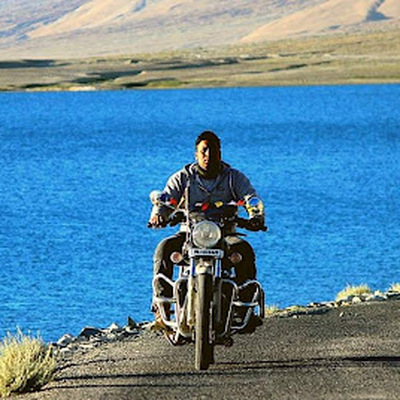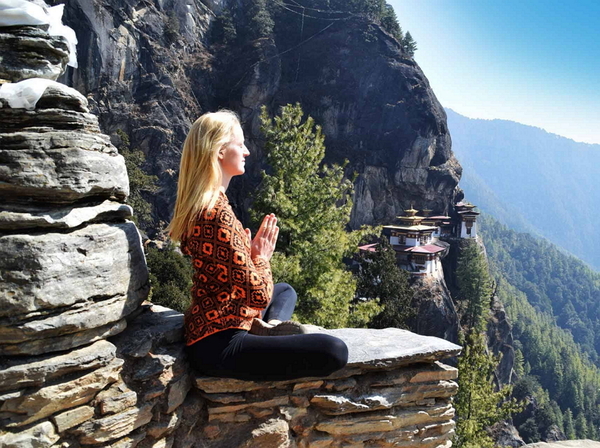Notifications
ALL BUSINESS
COMIDA
DIRECTORIES
ENTERTAINMENT
FINER THINGS
HEALTH
MARKETPLACE
MEMBER's ONLY
MONEY MATTER$
MOTIVATIONAL
NEWS & WEATHER
TECHNOLOGIA
TV NETWORKS
VIDEOS
VOTE USA 2026/2028
INVESTOR RELATIONS
COMING 2026 / 2027
ALL BUSINESS
COMIDA
DIRECTORIES
ENTERTAINMENT
FINER THINGS
HEALTH
MARKETPLACE
MEMBER's ONLY
MONEY MATTER$
MOTIVATIONAL
NEWS & WEATHER
TECHNOLOGIA
TV NETWORKS
VIDEOS
VOTE USA 2026/2028
INVESTOR RELATIONS
COMING 2026 / 2027
About Me
 Lokesh Sharma
Lokesh Sharma Hello, I’m Lokesh Sharma , a passionate travel vlogger on a mission to explore the beauty, culture, and diversity our world has to offer. Through my lens, I share real, raw, and inspiring travel experiences — from bustling city streets and tranquil beaches to offbeat trails and cultural wonders. Every journey is a story, and I bring those stories to life through engaging videos, detailed guides, and practical tips that help my audience plan their own adventures.
 Lokesh Sharma -
9 hours ago -
Personal -
Travel
trip
blog
Bhutan trip
bhutan
-
11 views -
0 Comments -
0 Likes -
0 Reviews
Lokesh Sharma -
9 hours ago -
Personal -
Travel
trip
blog
Bhutan trip
bhutan
-
11 views -
0 Comments -
0 Likes -
0 Reviews

Planning a trip to the Himalayas can feel like a dream, especially when you're headed to a gem like Bhutan — a small kingdom packed with culture, beauty, and spiritual charm. If you're wondering how to make the most of your visit, you’ll find plenty of Bhutan vacation packages available, each offering something special. One of the most popular among travelers is the Best of Bhutan in 5 Days itinerary, which gives you just the right taste of this peaceful nation’s highlights.
In this blog, we’ll walk you through everything you need to know for planning your Bhutan getaway — from when to go and what to pack, to the hidden places you simply can't miss. Whether it’s your first trip or a return visit, this guide is packed with insights, practical tips, and answers to FAQs to make your Bhutan journey effortless and enriching.
Bhutan is not just a destination — it’s a soul-refreshing experience.
Often called the "Land of the Thunder Dragon," Bhutan stands apart from the rest of the world with its commitment to Gross National Happiness (GNH) over GDP. This country focuses on harmony, well-being, and preserving its environment and culture. And that’s exactly why travelers love it.
Here’s why Bhutan should be on your travel list:
Unspoiled nature: 70% of Bhutan is covered in forests
Rich culture: Over 2,000 monasteries and cultural sites
Friendly people: Bhutanese hospitality is warm and sincere
Adventure: Hiking, river rafting, and spiritual treks
Before you dive into the excitement, there are a few basics to sort out.
Spring (March–May): Ideal for blooming flowers and mild treks
Autumn (September–November): Clear skies and vibrant festivals
Winter (December–February): Less crowded and peaceful
Avoid summer (June–August) unless you’re okay with monsoon rains
You can fly to Paro International Airport (the only international airport) from cities like Delhi, Kathmandu, Bangkok, and Singapore. Druk Air and Bhutan Airlines are the two main carriers.
From budget-friendly homestays to luxury resorts, Bhutan offers a variety of accommodations. Places like Paro, Thimphu, and Punakha have excellent options for all budgets.
Each corner of Bhutan offers something unique. Here are some top spots:
Home to the famous Tiger’s Nest Monastery (Taktsang), Paro is stunning. Trekking to this cliff-side temple is one of the most rewarding experiences in Bhutan.
Bhutan's capital city is a blend of tradition and modernity. Visit the Buddha Dordenma statue, the weekend market, and the Tashichho Dzong.
Known for its beautiful Punakha Dzong and the thrilling suspension bridge, Punakha is where spirituality meets adventure.
A quieter and deeply spiritual place. Visit temples, learn about Bhutanese farming, and explore peaceful valleys.
Here’s a quick list of essentials to make your trip comfortable:
Layers of clothes (temperatures can vary a lot)
Comfortable hiking shoes
Raincoat or umbrella
Power bank and universal adapter
Sunscreen and sunglasses
Travel insurance documents
Local currency (Ngultrum) or Indian Rupees (accepted in most places)
Many travelers opt for Bhutan vacation packages that offer a compact yet complete experience. If you’re short on time, the Best of Bhutan in 5 Days tour is a fantastic choice. It typically includes:
Day 1: Arrival in Paro and drive to Thimphu
Day 2: Explore Thimphu’s highlights
Day 3: Drive to Punakha, visit the dzong and village
Day 4: Return to Paro, trek to Tiger’s Nest
Day 5: Departure
This kind of itinerary is perfect for travelers looking to cover the key cultural and natural attractions without feeling rushed.
Bhutan is one of the only carbon-negative countries in the world. By choosing to visit, you’re supporting a country that prioritizes sustainability and environmental conservation. Here’s how you can be a responsible traveler in Bhutan:
Use reusable water bottles
Support local artisans
Respect religious customs
Limit plastic use
Take a piece of Bhutan home with you. Some popular souvenirs include:
Handmade crafts and textiles
Bhutanese chili and cheese (ema datshi)
Buddhist prayer flags
Incense sticks and herbal teas
Local honey and organic beauty products
Bhutanese cuisine is spicy and hearty. Must-try dishes include:
Ema Datshi – chili and cheese stew
Phaksha Paa – pork with radish
Red rice – a staple across the country
Momos – Bhutanese-style dumplings
Butter tea – salty and warm, perfect for high altitudes
If your visit lines up with a local festival, consider yourself lucky. Tshechu festivals are colorful, musical, and spiritual events held in various towns throughout the year.
Some famous ones include:
Paro Tshechu (Spring)
Thimphu Tshechu (Autumn)
Punakha Drubchen (February–March)
These festivals are a great way to witness masked dances, traditional music, and local Bhutanese attire.
Bhutan is also a wonderful place to reset mentally and physically. You’ll find plenty of wellness retreats offering meditation, yoga, and traditional herbal baths.
Visit monasteries for guided meditation
Try a hot stone bath in a local farmhouse
Walk silent trails in the forested valleys
Here are a few interesting facts and figures:
Annual tourist arrivals (pre-pandemic): Around 315,600
Daily sustainable development fee (SDF): USD 100 for most international travelers
Bhutan has more monks per capita than any other country in the world
Forests absorb 6 million tons of CO₂, while the country only produces about 2.2 million tons
Yes, all foreign travelers (except Indians, Bangladeshis, and Maldivians) need a visa. You’ll usually get it through a licensed Bhutanese tour operator.
It can be, due to the daily SDF and packaged tours. But many travelers agree that the peaceful experience and natural beauty are worth the cost.
As of 2025, most foreign tourists still need to book through registered operators, but there are some flexible options for regional tourists.
The currency is Ngultrum (BTN), which is pegged to the Indian Rupee. Indian Rupees are accepted almost everywhere in Bhutan.
Absolutely. Bhutan is one of the safest travel destinations in the world, with very low crime rates.
Bhutan is not your usual vacation. It’s an experience that changes you. From trekking to Tiger’s Nest to joining locals in colorful festivals, this country is full of wonder.
Take your time to explore the different Bhutan vacation packages and choose one that suits your pace. If you’re short on time, the Best of Bhutan in 5 Days is a beautiful introduction to the country’s heart and soul.
